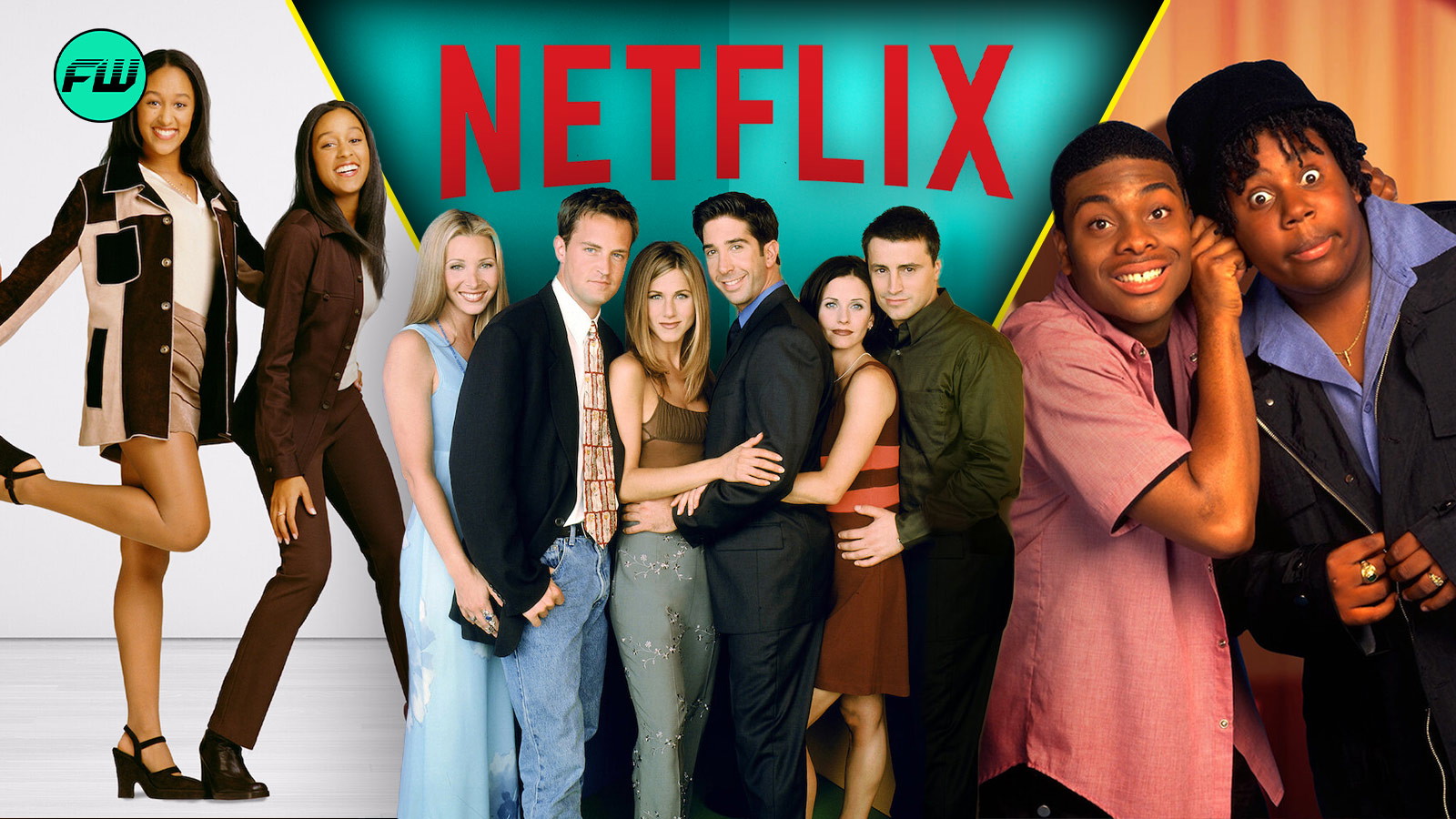
Let’s be real, the ’90s were absolutely iconic when it came to television. We’re talking about a decade that gave us some of the most quotable, binge-worthy, and downright legendary shows that still have us glued to our screens today.
Whether you lived through the era of dial-up internet and frosted tips, or you’re just discovering these gems for the first time, there’s something magical about ’90s TV that modern shows are still trying to capture.
From sitcoms that defined “must-see TV” to teen dramas that made us believe high school could actually be fun, this decade was pure television gold. The best part? You can relive all that nostalgic goodness right from your Netflix queue.
1. Seinfeld (1989-1998)
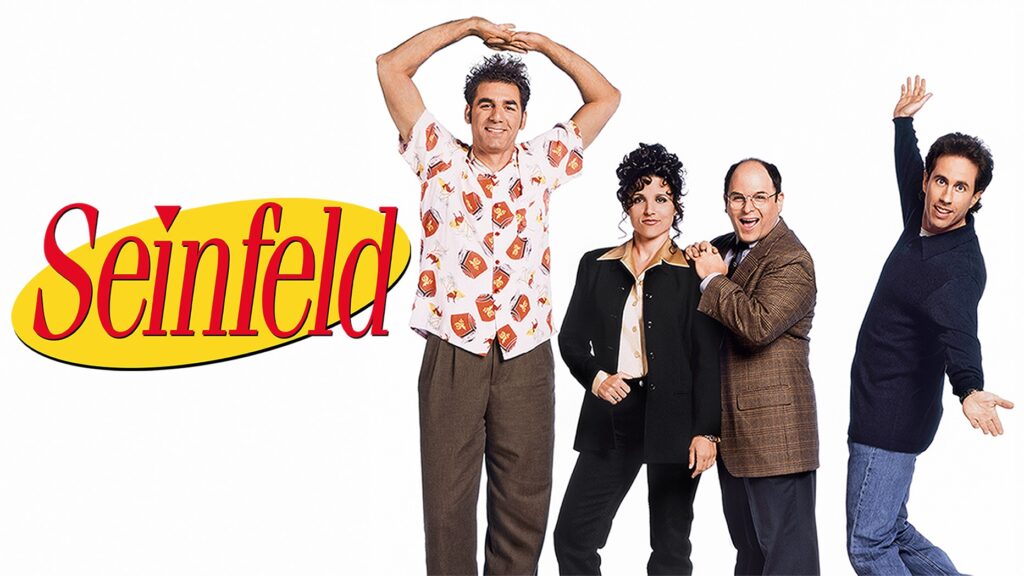
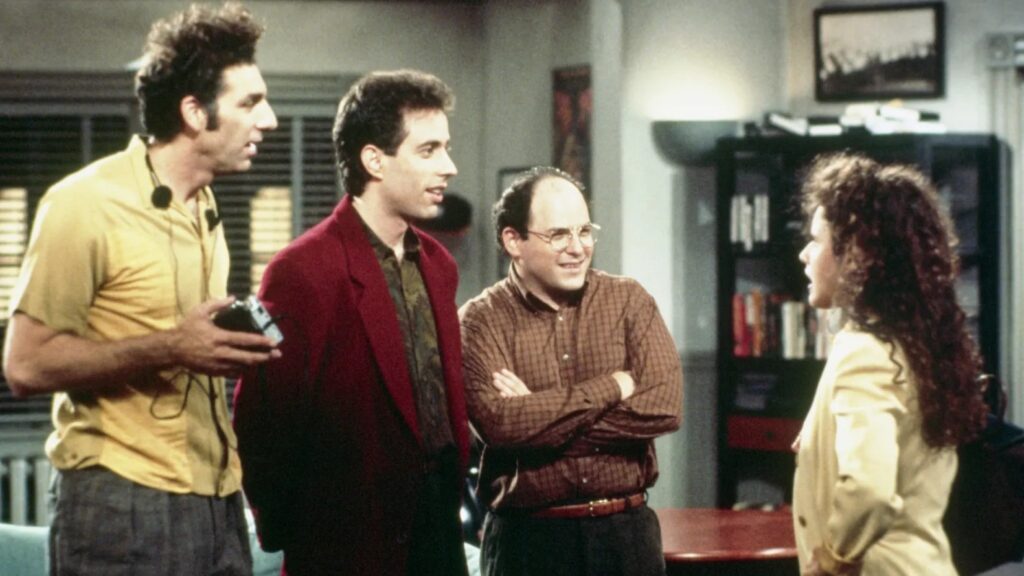
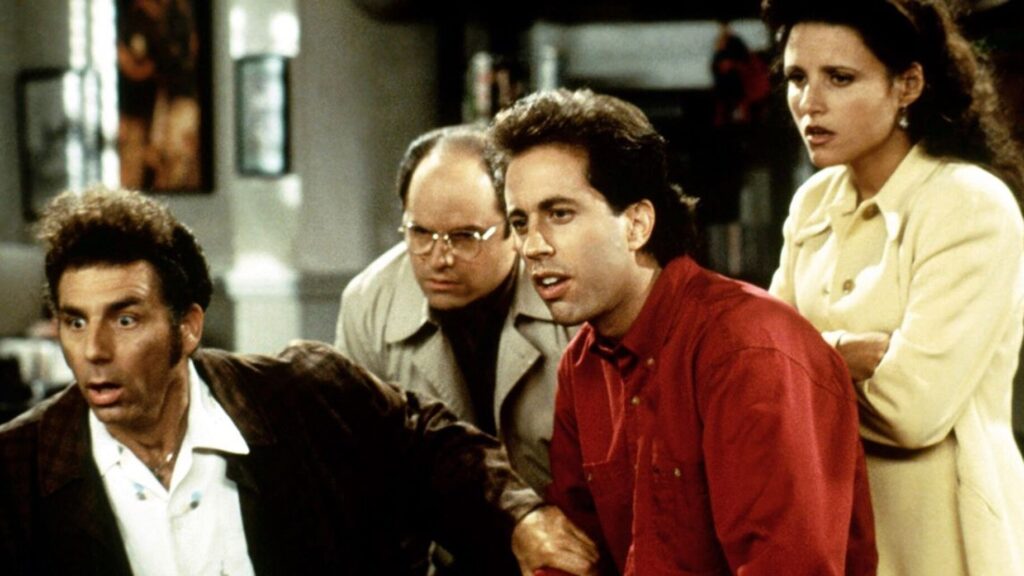

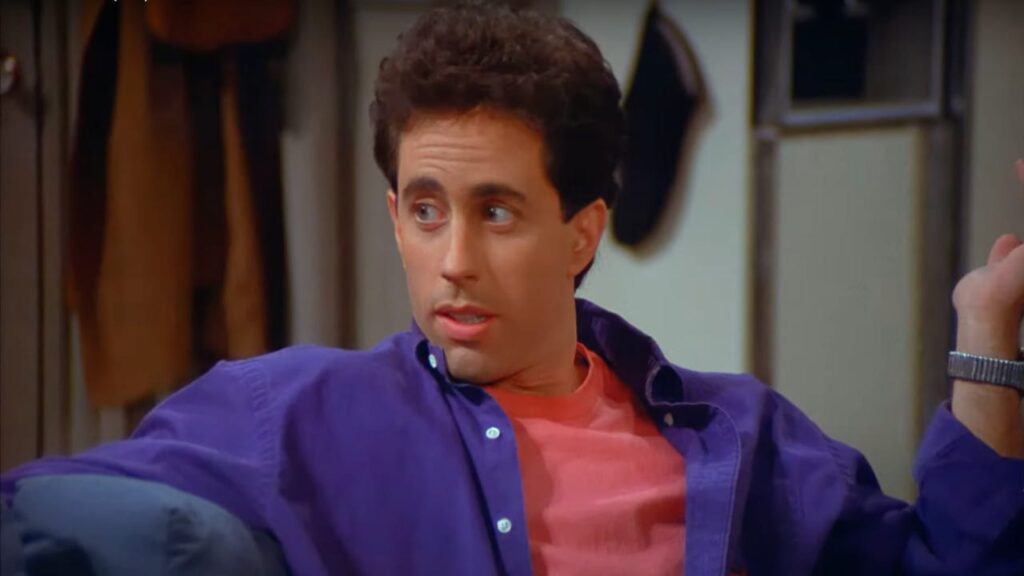
If you’ve never experienced the brilliance of Jerry Seinfeld‘s “show about nothing,” you’re seriously missing out on one of television’s greatest achievements. This isn’t just any sitcom – it’s the sitcom that changed everything about how we think about comedy on TV.
Jerry, George, Elaine, and Kramer transformed everyday situations, such as waiting for a table at a restaurant or losing your car in a parking garage, into comedic masterpieces that still have people quoting them decades later. The genius of Seinfeld lies in its ability to find humor in the mundane aspects of daily life, from the etiquette of close-talking to the politics of getting the “good” seat at a movie theater.
Larry David and Jerry Seinfeld created characters so neurotic and self-absorbed that they somehow became relatable, and their New York City adventures remain as fresh today as they were in the ’90s. Plus, let’s be honest, we all know someone who’s basically a real-life George Costanza.
2. Kenan & Kel (1996-2000)
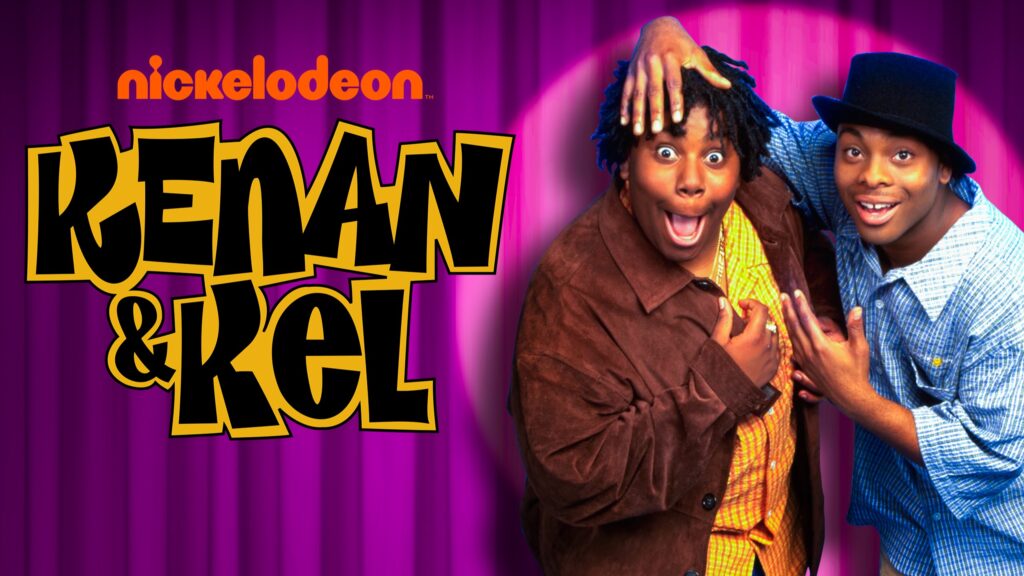
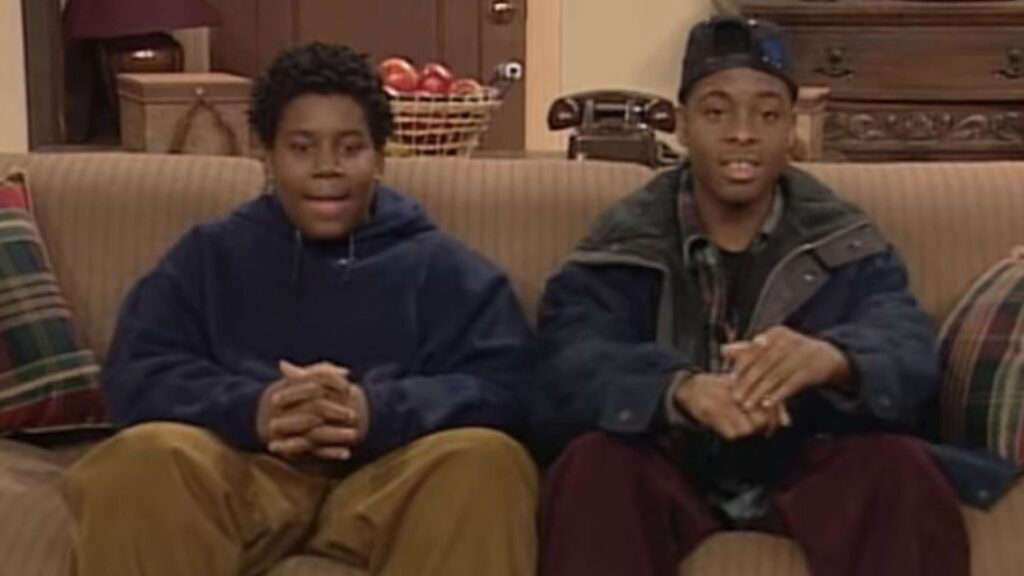
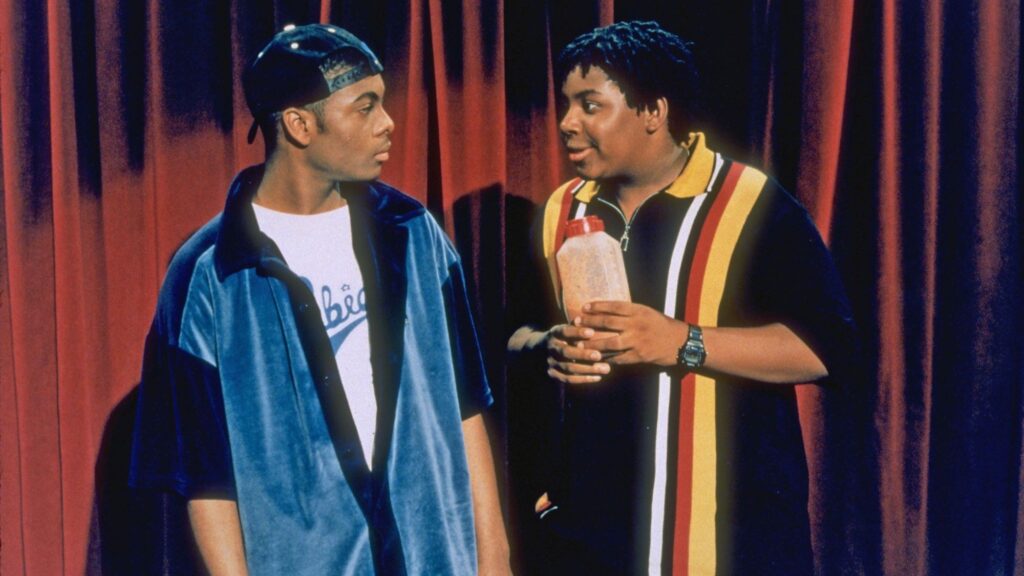

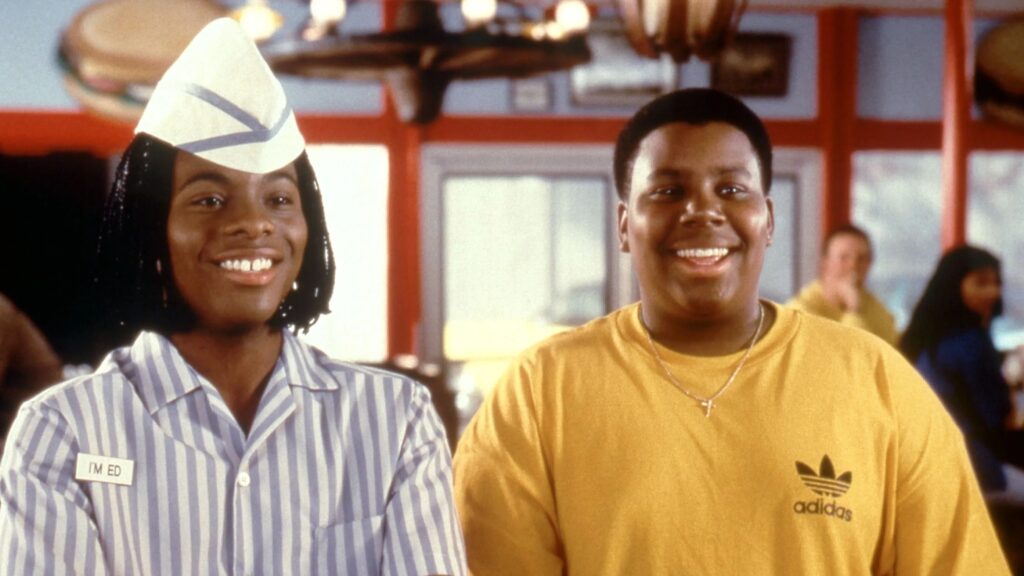
Get ready to have “Aw, here it goes!” stuck in your head for the rest of the day because Kenan & Kel is pure ’90s Nickelodeon magic at its finest. Kenan Thompson and Kel Mitchell had already won over audiences on All That, but this buddy comedy spin-off proved they were destined for sitcom stardom.
The show follows their misadventures as two best friends in Chicago whose get-rich-quick schemes always end up backfiring in the most hilarious ways possible. What made this show special wasn’t just the physical comedy or Kel’s obsession with orange soda (though that was pretty great); it was the genuine friendship between the two leads that felt authentic, even when the situations got completely ridiculous.
From accidentally destroying Kenan’s boss’s store to somehow ending up on a game show, these two could turn any ordinary day into complete chaos. The show also featured some fantastic supporting characters, including Kenan’s family and his perpetually frustrated boss at Rigby’s grocery store. It’s comfort food television that reminds you why Saturday morning cartoons and Nickelodeon ruled our weekends.
3. The Fresh Prince of Bel-Air (1990-1996)
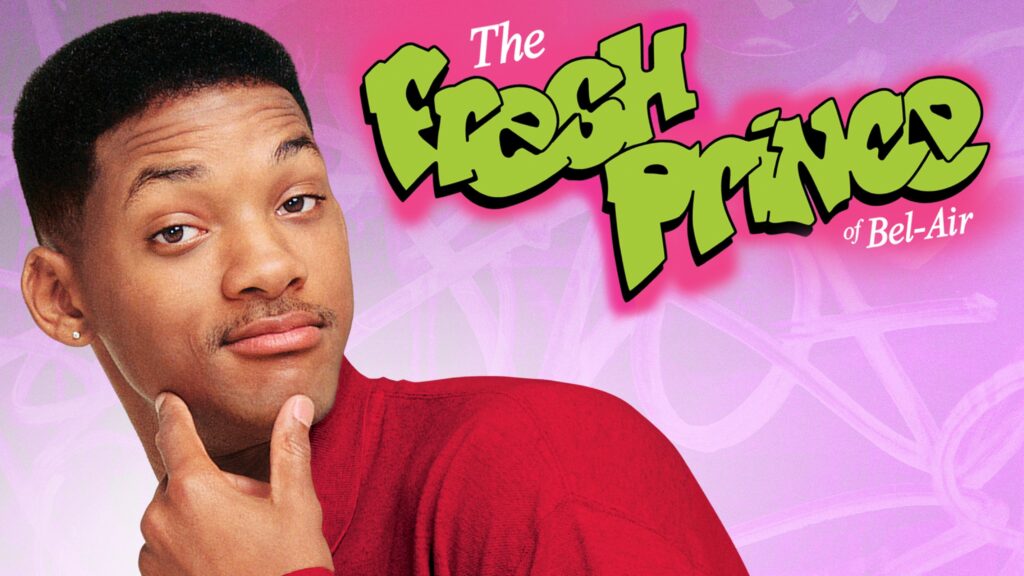
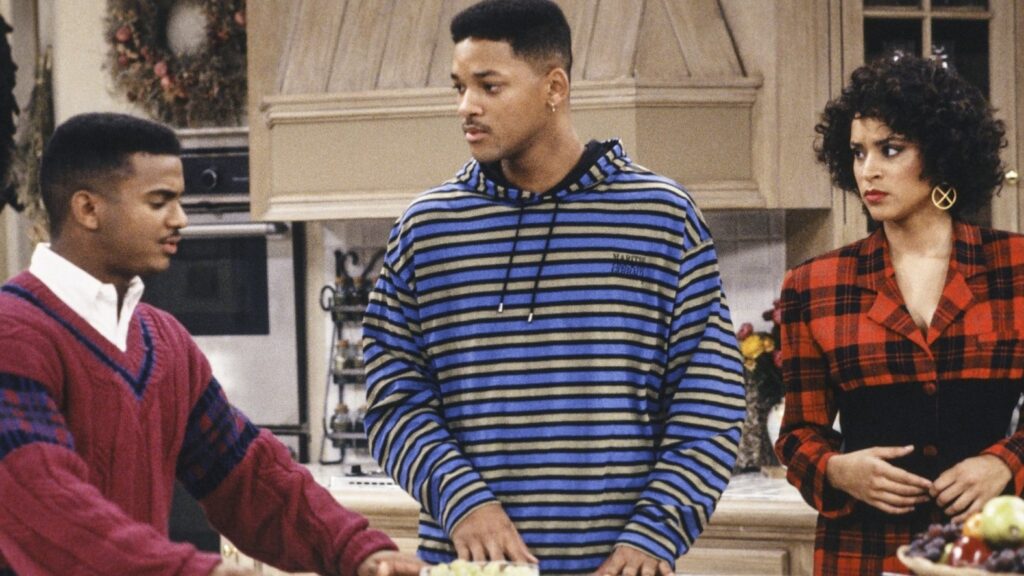


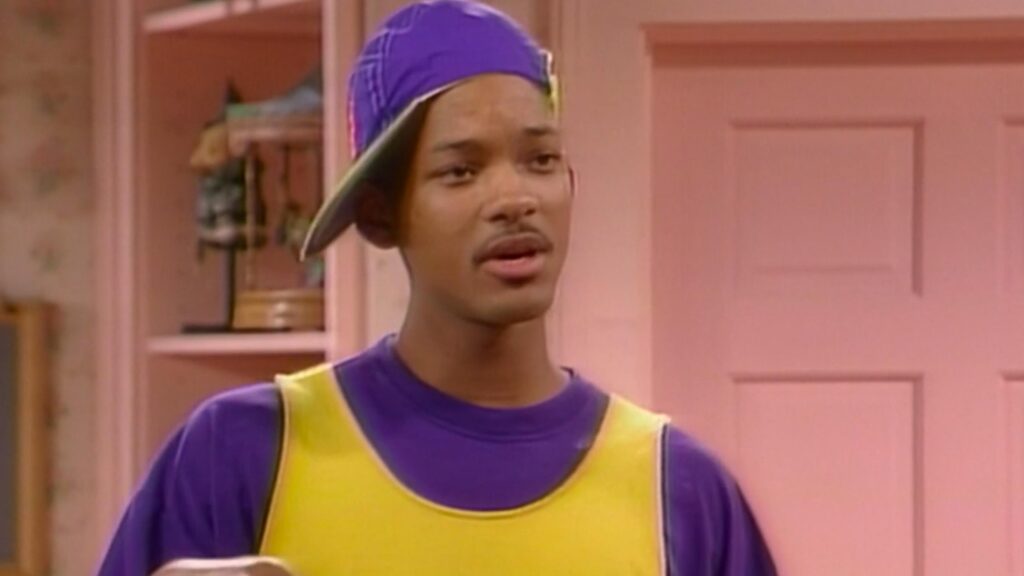
Will Smith didn’t just star in this show – he basically invented the blueprint for how to be effortlessly cool on television. The premise might sound simple on paper: street-smart kid from Philadelphia moves in with his wealthy relatives in Bel-Air, but the execution was absolutely perfect.
Will’s culture clash with his uptight cousin Carlton, his Uncle Phil’s tough love, and Aunt Vivian’s nurturing wisdom created some of the most memorable family dynamics in sitcom history.
What really set The Fresh Prince apart was its ability to tackle serious social issues while still being genuinely funny. Episodes dealing with racism, violence, and family dysfunction never felt preachy because they were grounded in real emotion and authentic character relationships.
And let’s not forget the physical comedy – Will’s reactions to Carlton’s dancing, his schemes to avoid getting in trouble with Uncle Phil, and his romantic mishaps were comedy gold. The show also gave us some of the most quotable lines in TV history, as well as a theme song that is literally known by everyone by heart. James Avery’s Uncle Phil remains one of television’s greatest father figures, and the show’s impact on pop culture is still felt today.
4. Friends (1994-2004)
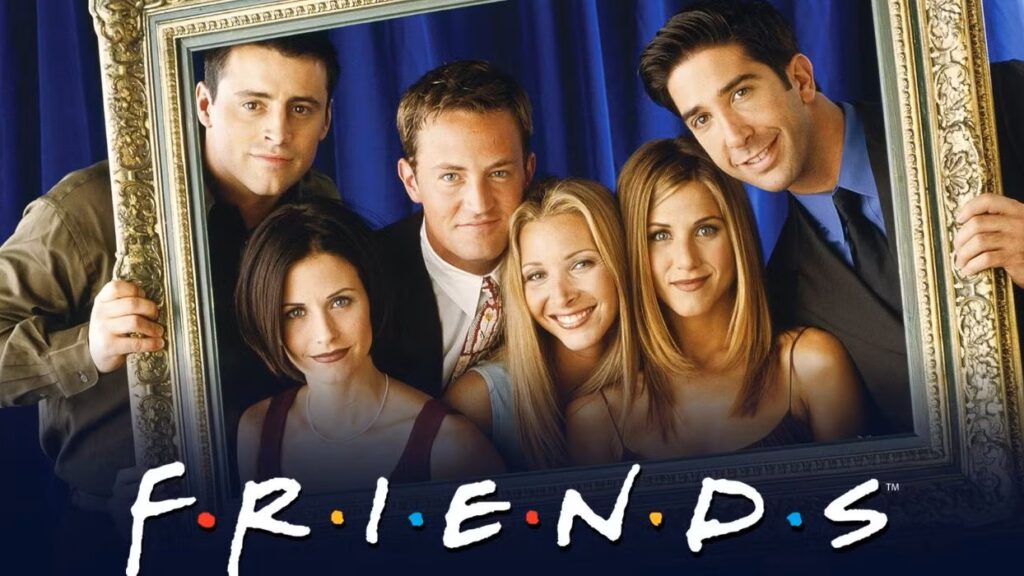
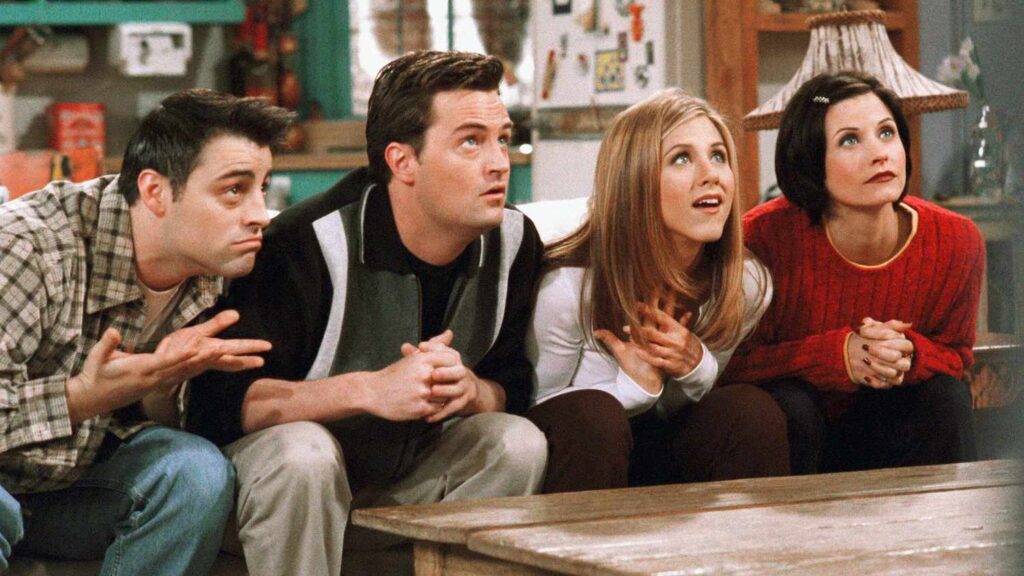
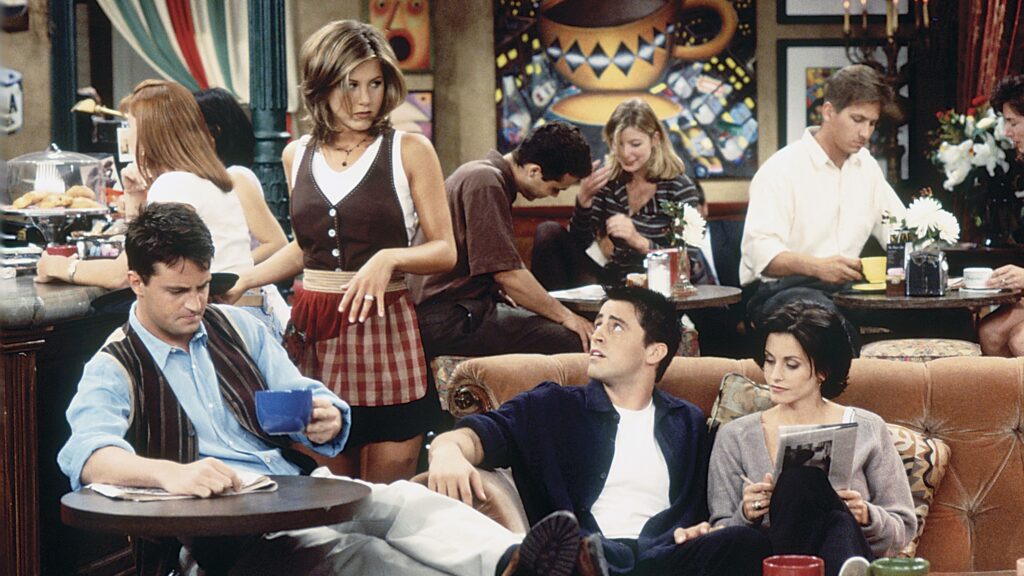

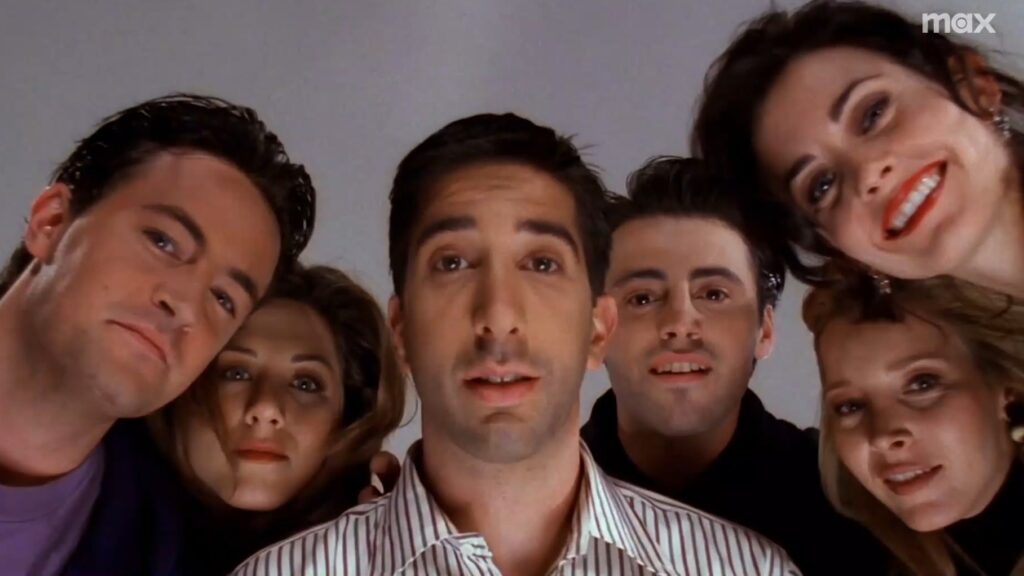
Could this BE any more of a cultural phenomenon? Friends basically defined what it meant to be a twenty-something in the ’90s, even if most of us could never afford apartments like theirs in Manhattan. Rachel, Monica, Phoebe, Ross, Chandler, and Joey became the friend group we all wanted to be part of, hanging out at Central Perk and somehow making even the most mundane conversations absolutely hilarious.
The show’s genius was in making each character distinctly different yet perfectly complementary – from Monica’s obsessive cleanliness to Phoebe’s quirky worldview to Chandler’s sarcastic one-liners.
The romantic storylines, especially Ross and Rachel’s on-again, off-again relationship, had viewers emotionally invested in a way that few shows have managed since.
But beyond the romance, Friends was really about the chosen family you create with your friends, and how those relationships can be just as important and complicated as any blood relationship. The show’s influence on fashion, language, and coffee shop culture can’t be overstated. Even today, people are still debating whether Ross and Rachel were really on a break, and “The Rachel” haircut remains iconic decades later.
5. Dawson’s Creek (1998-2003)
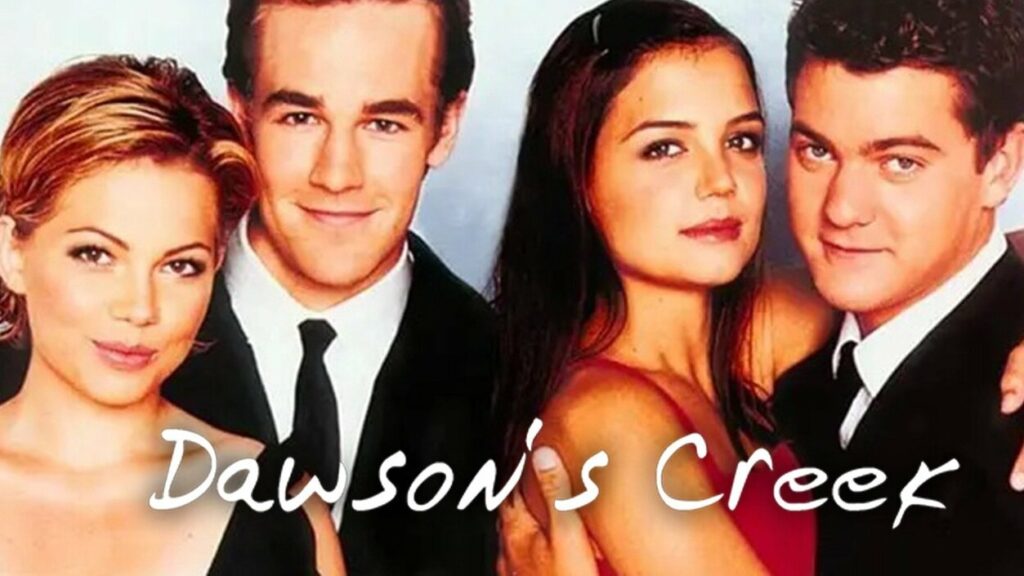
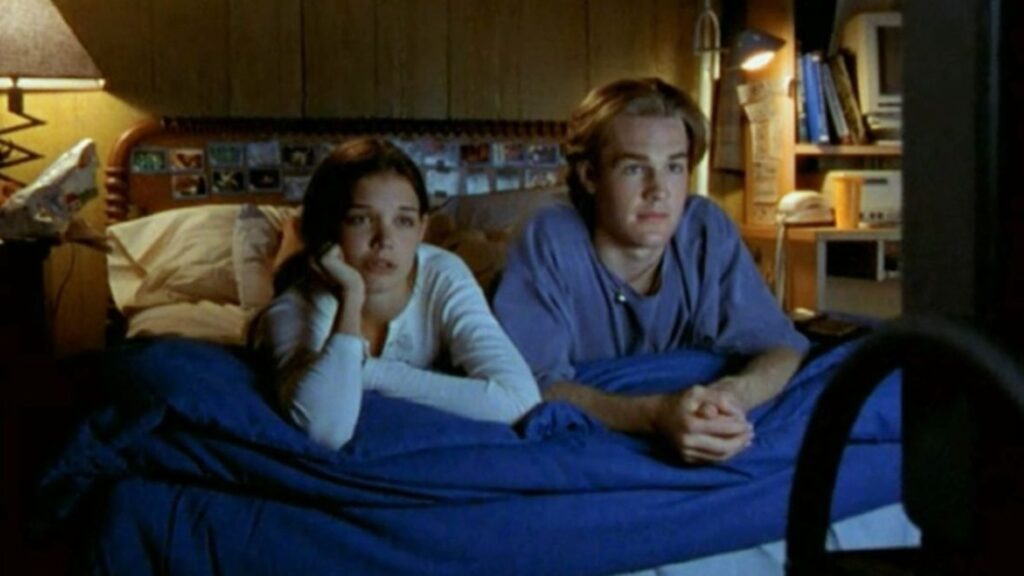
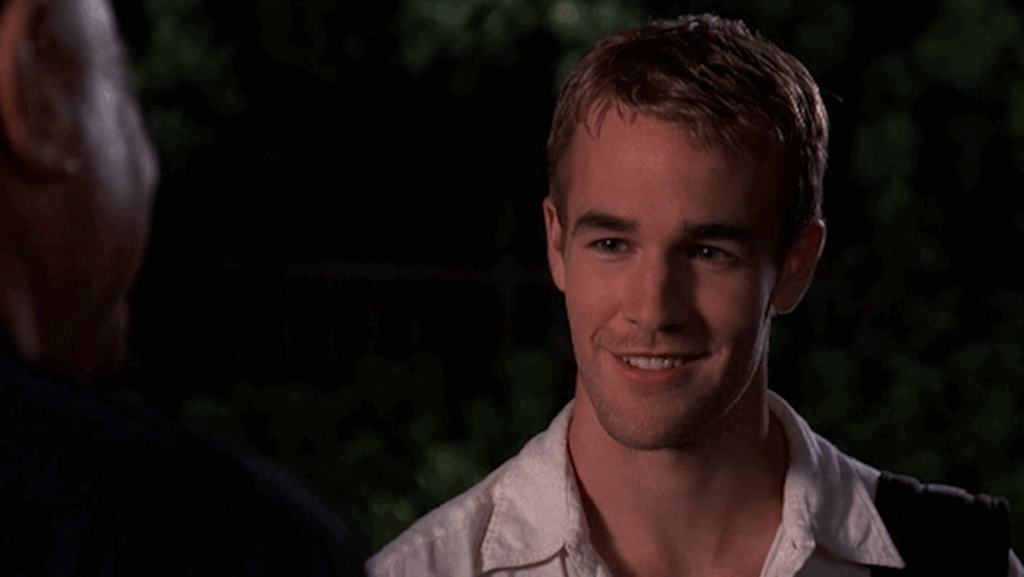
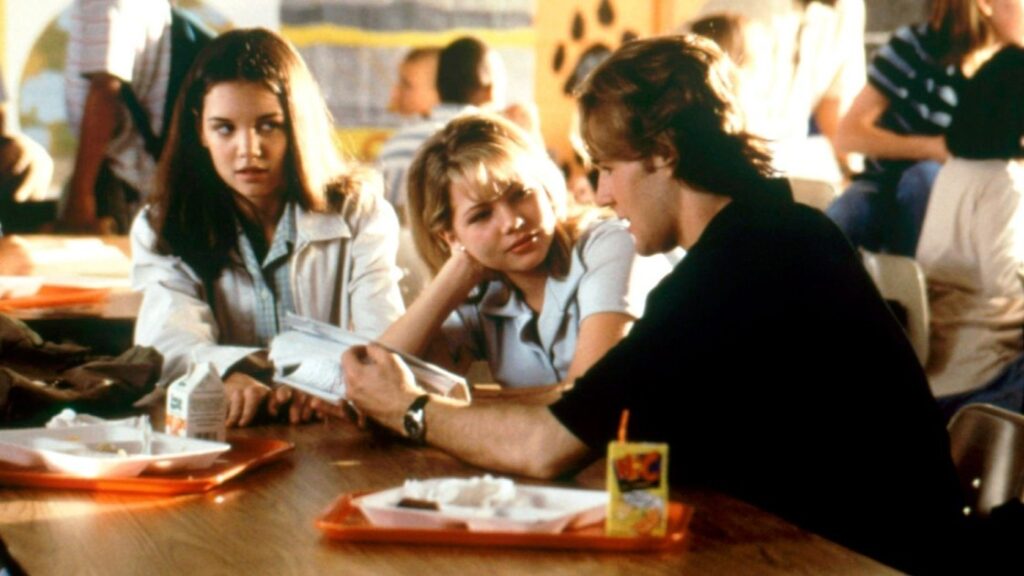
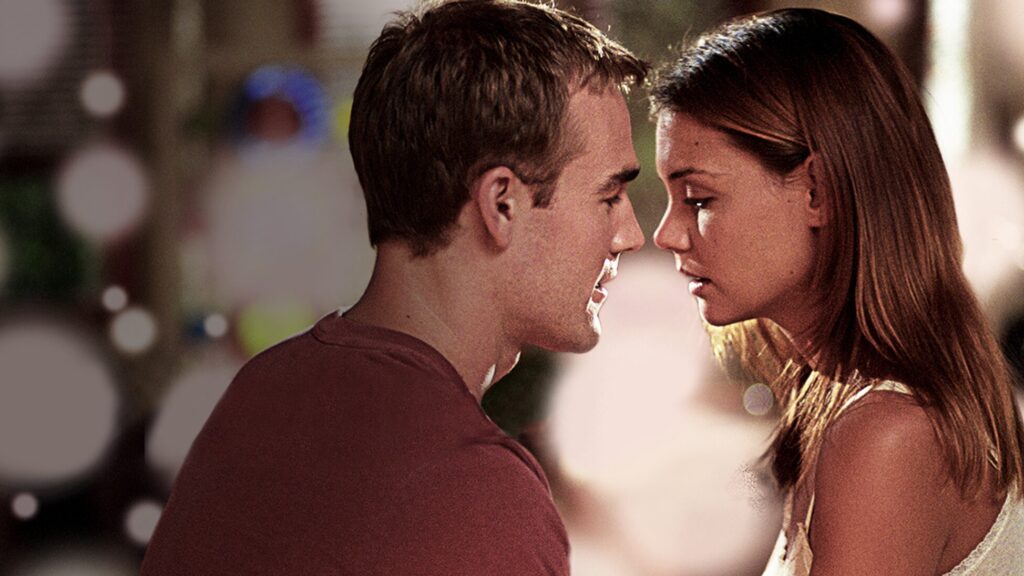
Before there was social media to document every teenage emotion, there was Dawson’s Creek, where teenagers in the fictional town of Capeside spoke like philosophy majors and felt everything with the intensity of a Shakespearean tragedy.
James Van Der Beek‘s Dawson Leery and his friends navigated the treacherous waters of adolescence with a vocabulary that would make college professors proud, turning every relationship drama into an eloquent exploration of love, friendship, and growing up.
The show pioneered the idea that teenagers were capable of deep, meaningful conversations about life, love, and everything in between. Katie Holmes‘s Joey Potter captured the girl-next-door appeal while dealing with serious family issues, and Joshua Jackson‘s Pacey Witter proved that the funny best friend could also be the romantic lead.
The love triangle between Dawson, Joey, and Pacey kept viewers invested for years, and the show’s willingness to let characters make real mistakes and face genuine consequences set it apart from other teen dramas.
Michelle Williams‘s Jen Lindley brought a worldly perspective to small-town Capeside, and her character’s journey dealt with issues like religion, sexuality, and family dysfunction with surprising depth. Dawson’s Creek didn’t just influence teen television – it basically created the template for every dramatic teen show that followed.
6. Mighty Morphin Power Rangers (1993-1995)

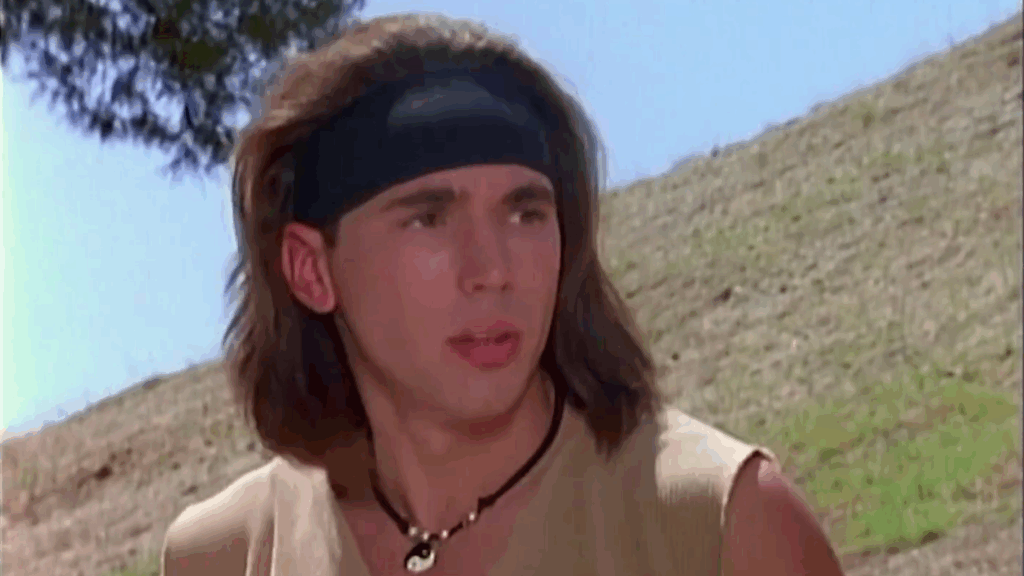
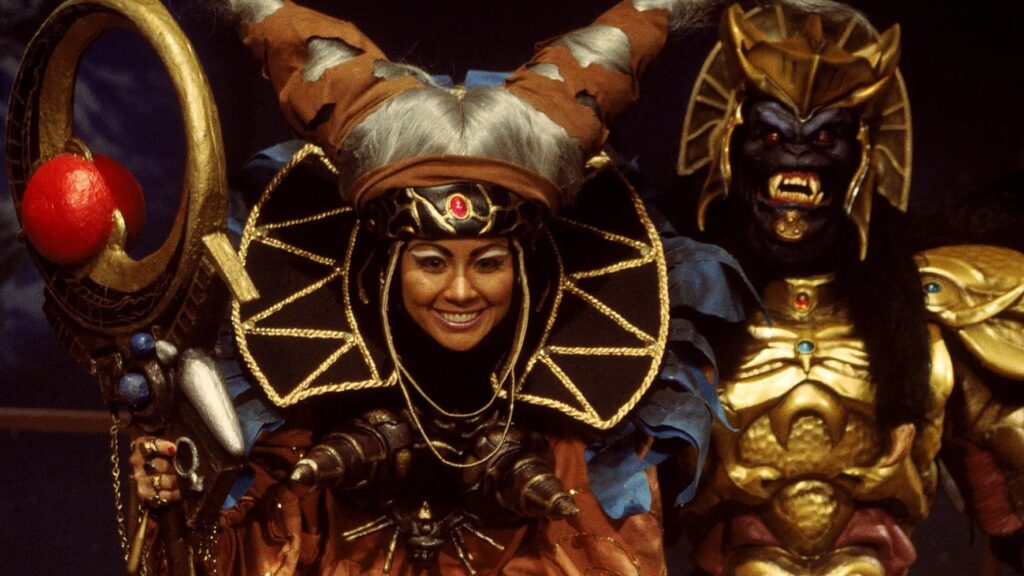
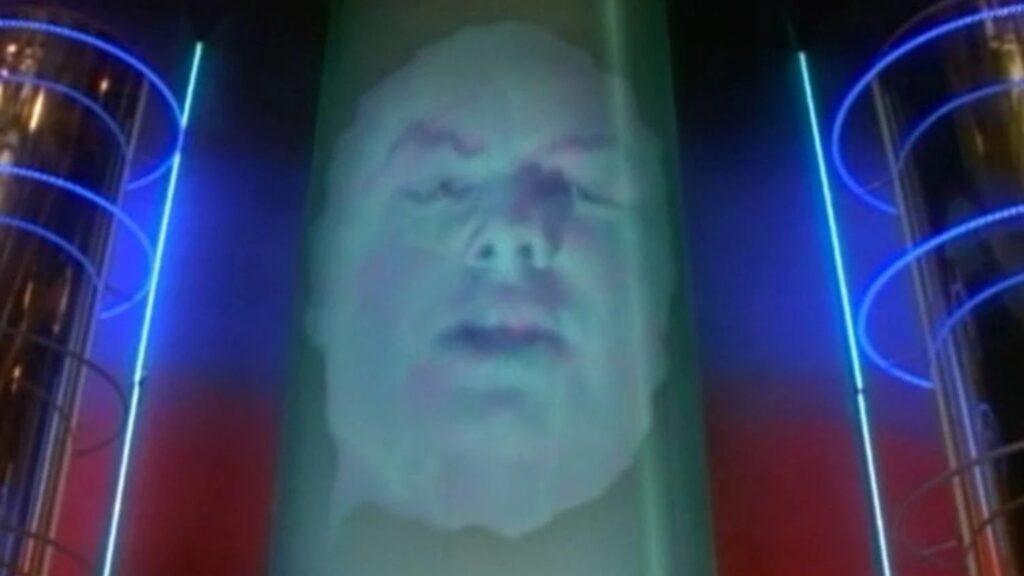
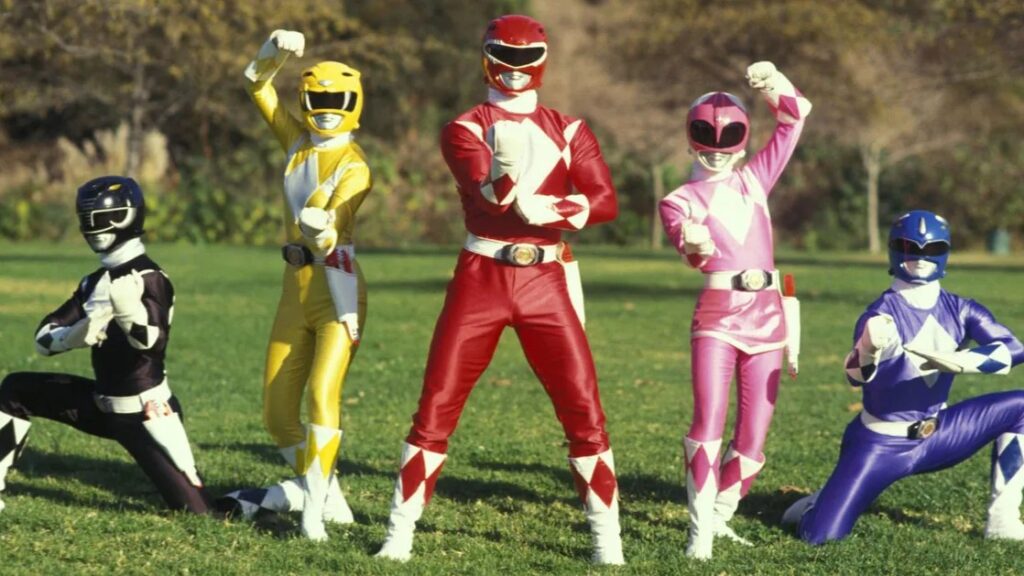
Let’s be real here – if you were a kid in the ’90s and didn’t pretend to morph into a Power Ranger at least once, did you even have a childhood? “It’s morphin’ time!” became the battle cry of an entire generation, and honestly, it still gives us chills thinking about it.
This show was absolutely bonkers in the best possible way. The creators essentially took Japanese Super Sentai footage and mixed it with American teenagers, somehow creating television gold. Five teenagers with attitude (and we all knew exactly what kind of attitude they meant) got chosen to defend Earth from Rita Repulsa, who was honestly one of the most dramatically evil villains ever put on screen.
What made Mighty Morphin Power Rangers so special wasn’t just the giant robot fights, though let’s be honest, those were pretty amazing. It was how the show managed to teach us about teamwork and friendship while delivering spectacular martial arts sequences.
Plus, each Ranger had their own color and personality, so playground arguments about who got to be which Ranger were absolutely legendary. The merchandising was insane too – if you didn’t have at least one Power Rangers toy, you were basically living in the Stone Age.
7. Moesha (1996-2001)

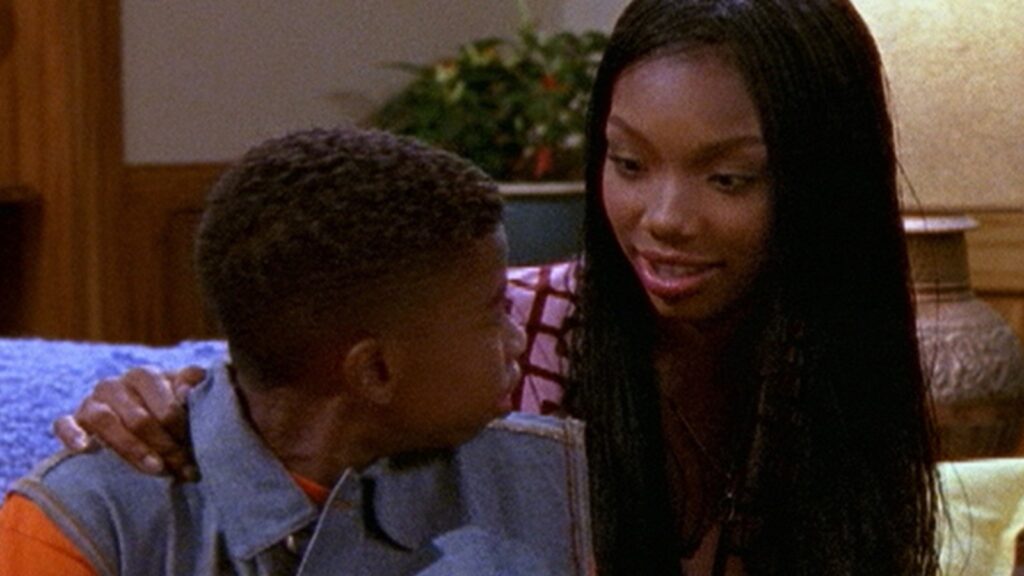
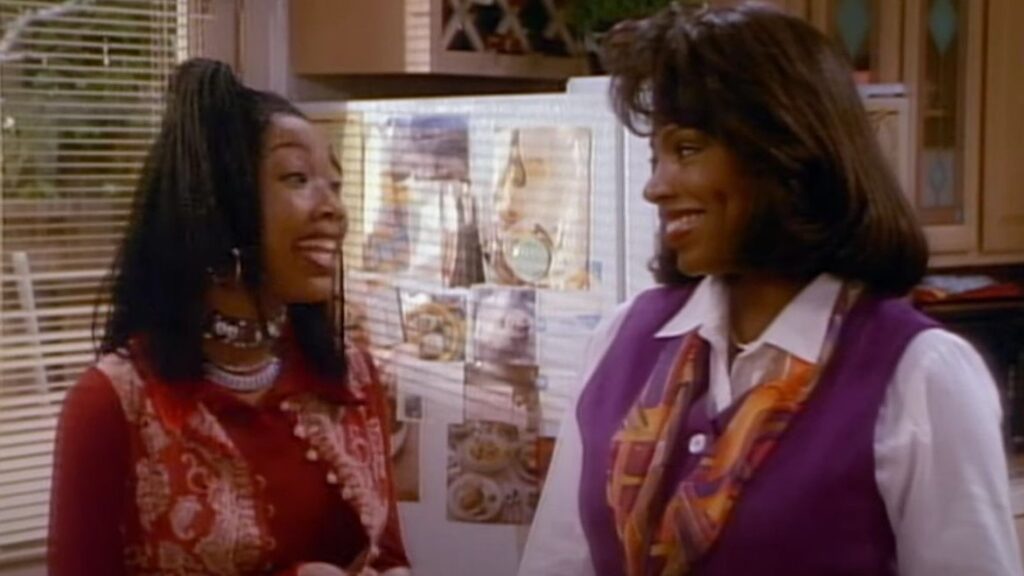


Brandy Norwood wasn’t just playing a character when she stepped into Moesha Mitchell’s shoes – she was giving us a whole new perspective on what it meant to be a teenager in the ’90s. This show was groundbreaking in ways that people don’t always talk about enough.
Set in South Central Los Angeles, Moesha tackled the real stuff that teenagers were actually dealing with. We’re talking about peer pressure, dating drama, family expectations, and yes, even some of the heavier topics like gang violence and community issues. But here’s what made it special – it never felt preachy or fake. Moesha felt like that friend who always kept it real with you, even when the truth wasn’t pretty.
The show was also a fashion icon; let’s not forget that. Moesha’s style was everything – from her hair to her outfits, she was setting trends that kids were copying in schools across America. And can we talk about that theme song? Brandy’s vocals were absolutely perfect for setting the mood.
The series provided representation that was often missing from mainstream television, and it did it with style, humor, and authenticity that made every episode feel like hanging out with friends.
8. Sister, Sister (1994-1999)
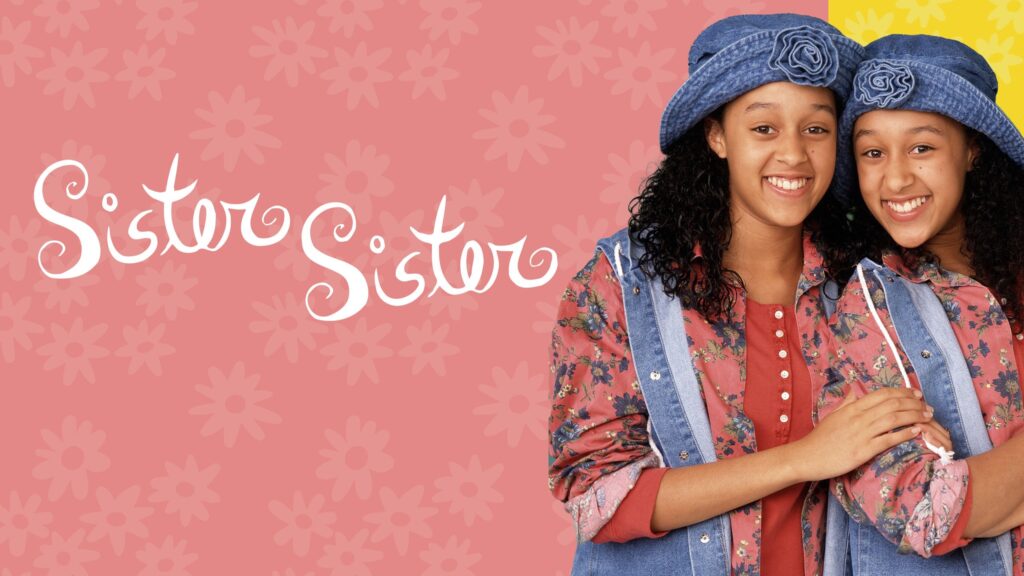

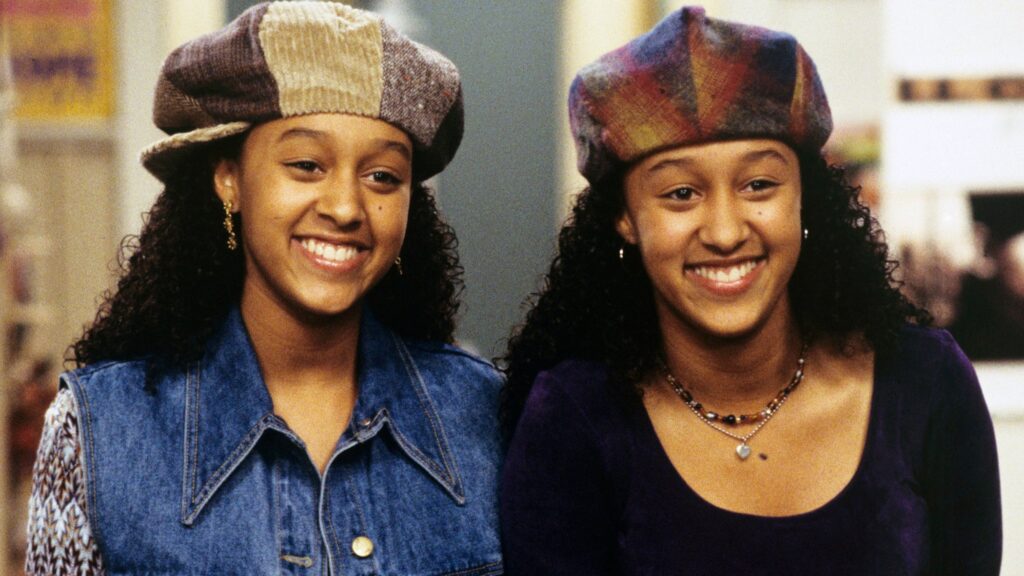


Okay, so imagine this: you’re at the mall, minding your own business, when suddenly you come face-to-face with someone who looks exactly like you. That’s basically how Tia and Tamera Mowry kicked off one of the most beloved sitcoms of the ’90s, and honestly, what a way to start a show!
The premise was simple but absolutely brilliant – identical twins separated at birth accidentally reunite as teenagers and convince their adoptive parents to move in together. The culture clash was real: studious Tia versus free-spirited Tamera created comedy gold in every single episode. But beyond the laughs, this show was really about family and what that means when your family doesn’t look like everyone else’s.
Tia and Tamera Mowry had this incredible chemistry that you just can’t fake – probably because they’re actual twins, but still! They made being smart and funny look effortless, and they were dealing with real teenage problems that we could all relate to.
The show was groundbreaking in its portrayal of blended families, and it featured strong female characters who were allowed to be both intelligent and silly. Plus, let’s be honest – their matching outfits were iconic, and we all secretly wanted to coordinate our clothes with our siblings after watching this show.
9. The Adventures of Sonic the Hedgehog (1993)
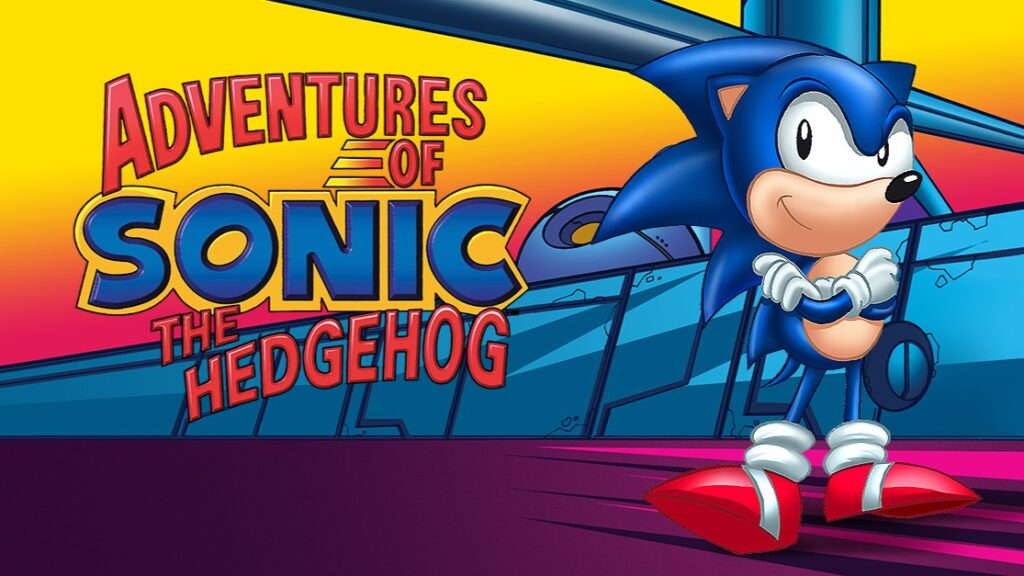
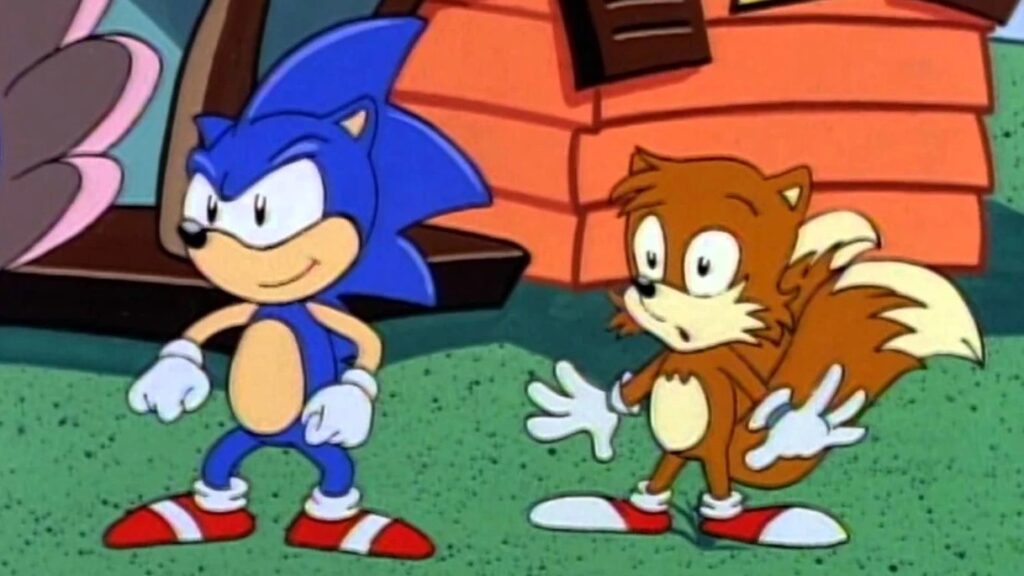
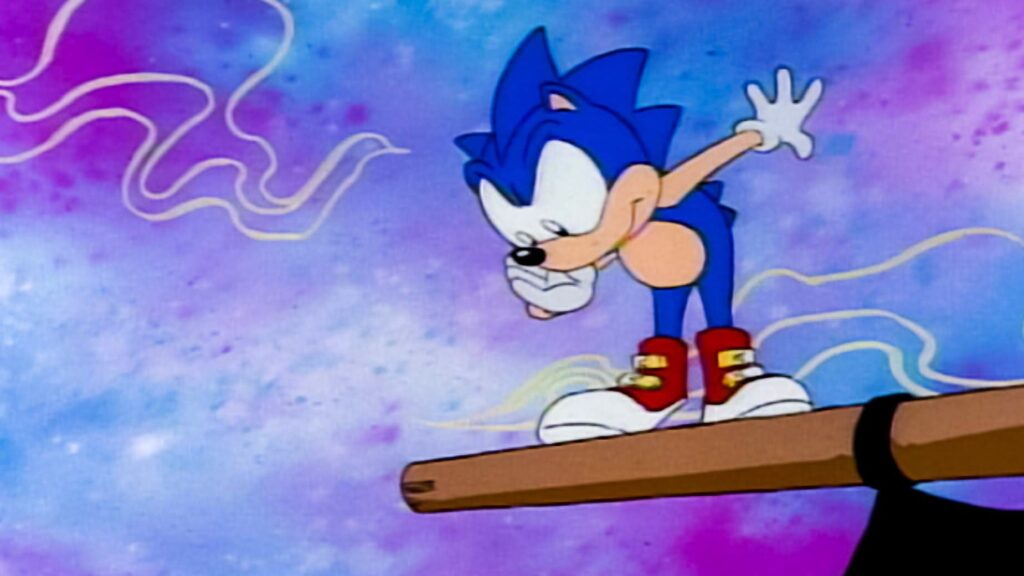
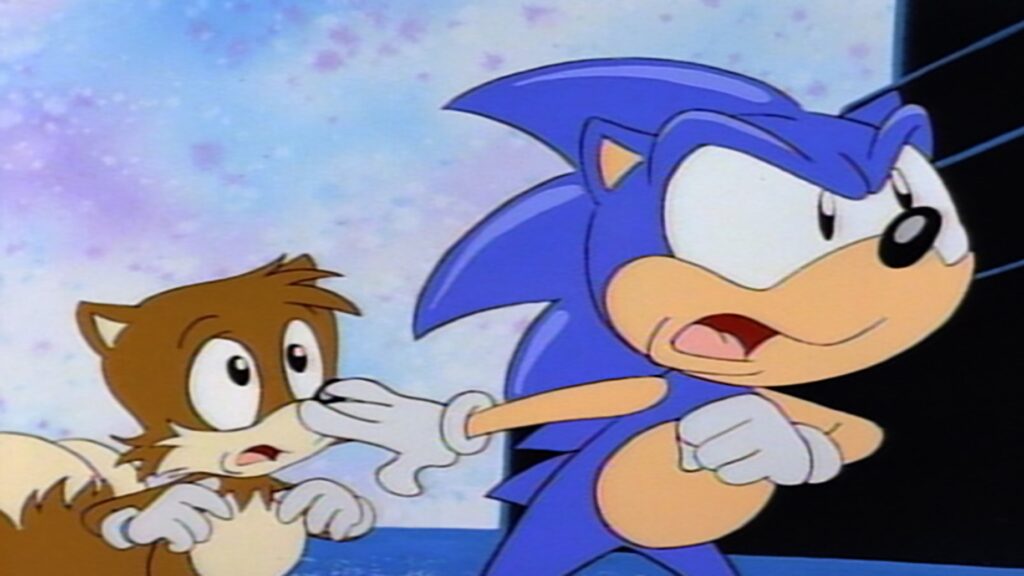
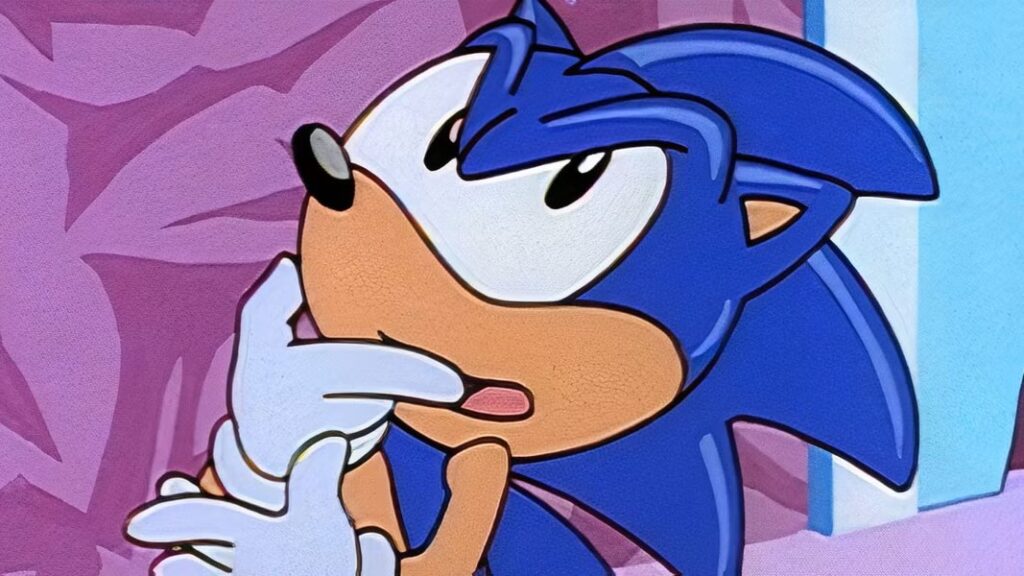
Before video game movies were breaking box office records, Sonic the Hedgehog was already proving that game characters could absolutely dominate television. This show was pure, concentrated energy in animated form, and it was exactly what we needed to get our Saturday morning cartoon fix.
Following everyone’s favorite blue speedster and his adorable sidekick Miles “Tails” Prower, the series threw them into constant battle against the delightfully evil Dr. Robotnik.
And can we talk about Dr. Robotnik for a second? This guy was the perfect cartoon villain – over-the-top, genuinely funny, but still threatening enough to make the stakes feel real. His robot minions were hilarious, and the slapstick humor was absolutely on point.
What made this show special was how it captured the essence of playing the actual Sonic games. The emphasis on speed, the colorful environments, the upbeat music – everything about it felt like you were controlling Sonic yourself.
The show also had this subtle environmental message woven throughout, which was pretty ahead of its time. It proved that animated series based on video games could be more than just cheap cash grabs – they could be genuinely entertaining television that honored the source material while creating something new.
10. The Parkers (1999-2004)
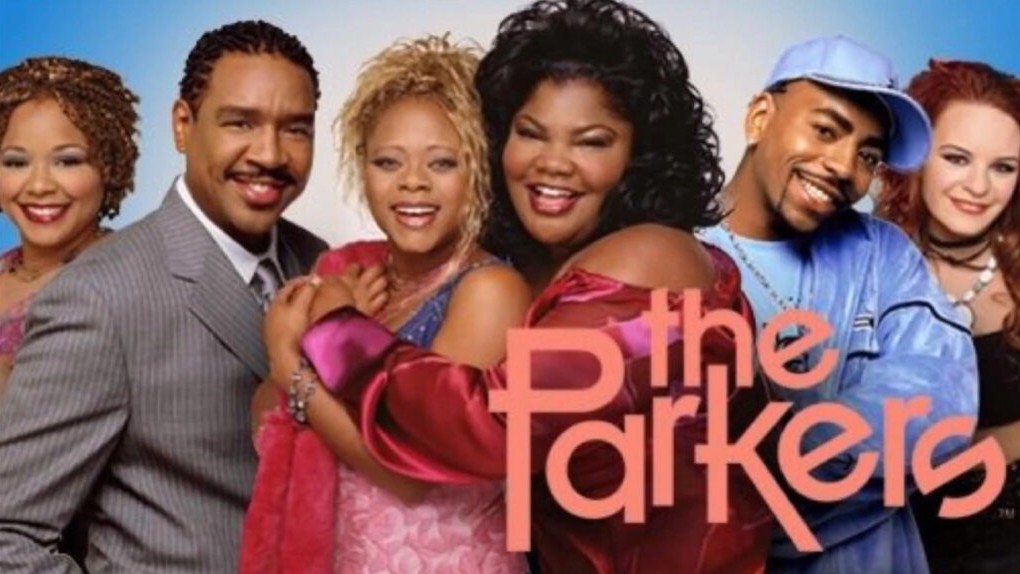
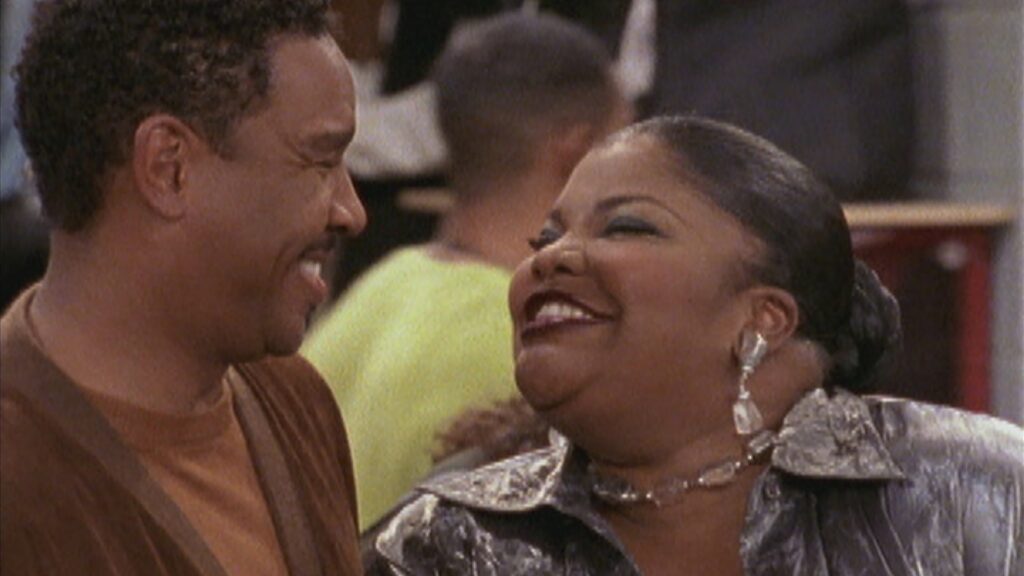
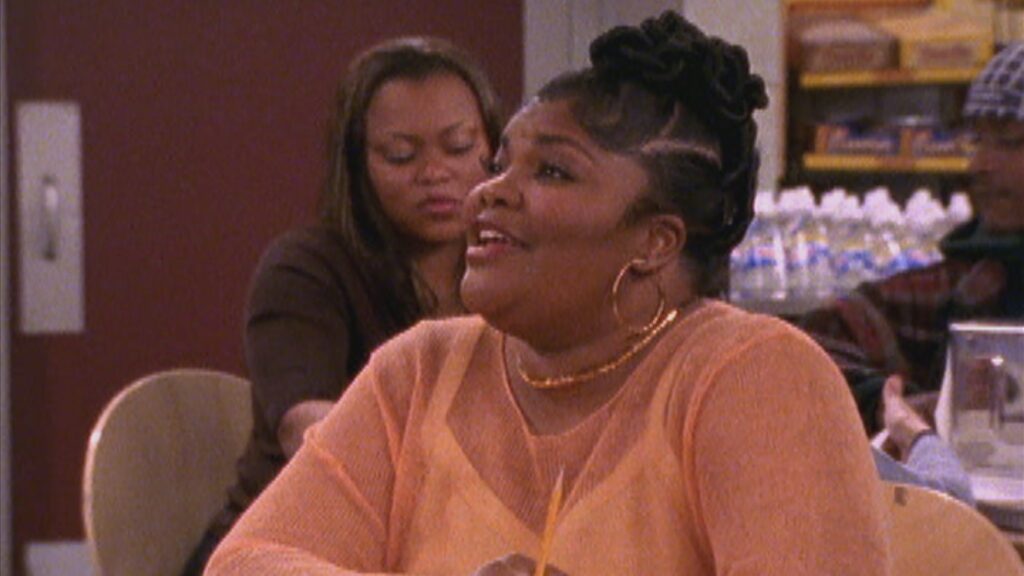
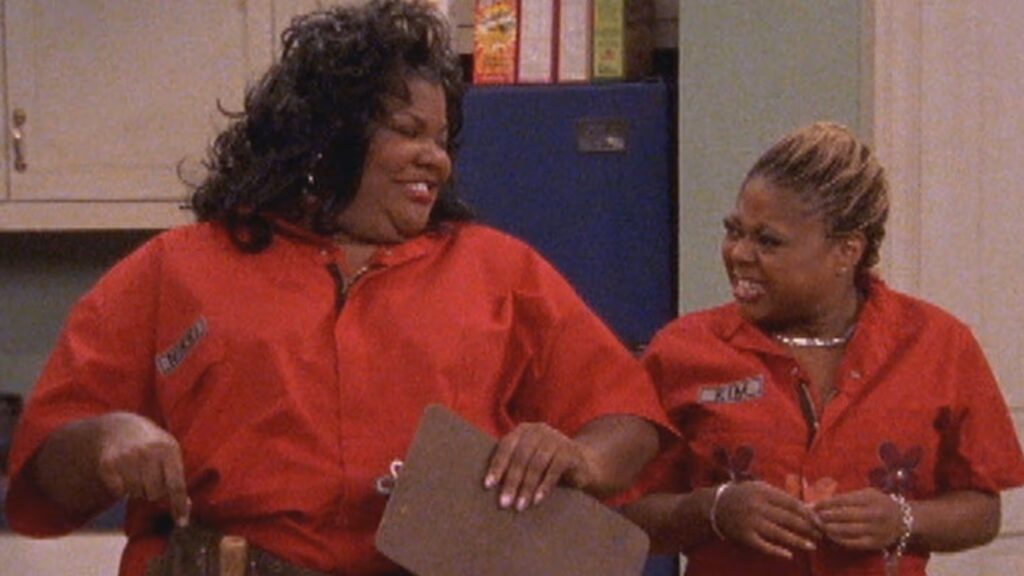
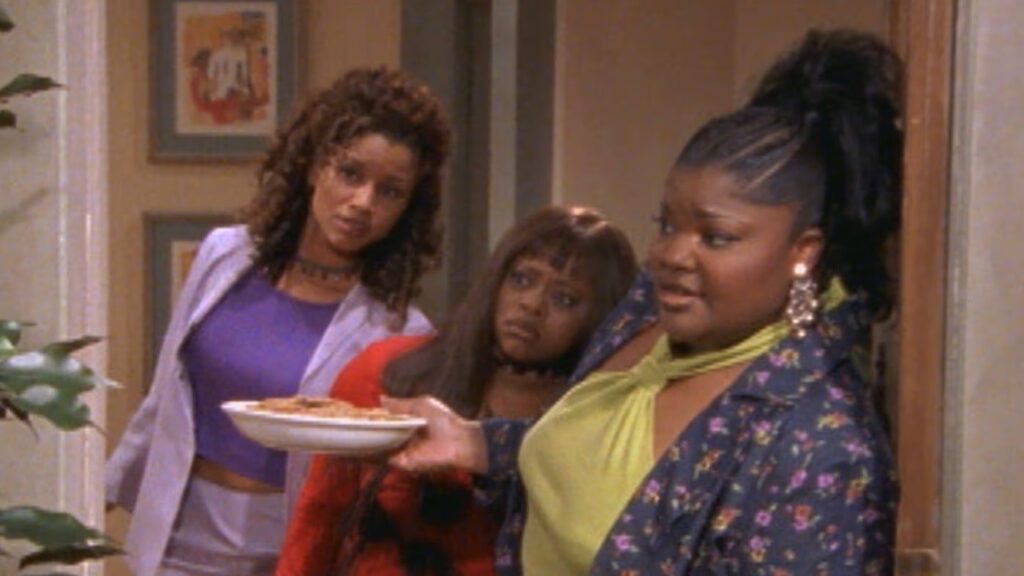
While The Parkers technically started in 1999, it was carrying the torch for ’90s sitcom excellence well into the new millennium. This Moesha spin-off took Countess Vaughn’s character, Kim Parker, and placed her into college alongside her mother, Nikki, played by the absolutely legendary Mo’Nique.
Now, the idea of going to college with your mom might sound like a nightmare to most people, but The Parkers made it work through sheer comedic brilliance. Mo’Nique’s Nikki Parker was an absolute force of nature – loud, proud, and completely unapologetic about who she was.
Her relentless pursuit of Professor Stanley Oglevee provided endless entertainment, and her confidence was genuinely inspiring, even when her methods were questionable.
The show was notable for featuring a predominantly Black cast and crew, which provided opportunities both in front of and behind the camera. The humor was distinctly urban and contemporary, never talking down to its audience or trying to be something it wasn’t.
Kim and Nikki’s relationship was complex and genuine – they were mother and daughter, but also roommates and classmates, which created unique dynamics that most family sitcoms never had the opportunity to explore. The show’s bold humor and authentic voice made it a hit with audiences who appreciated television that wasn’t afraid to be different.
Here’s the thing about streaming – it’s complicated, and availability changes faster than you can say “that’s so ’90s.” Netflix content varies significantly by country due to licensing agreements, so a show available in one region might not be accessible in another.
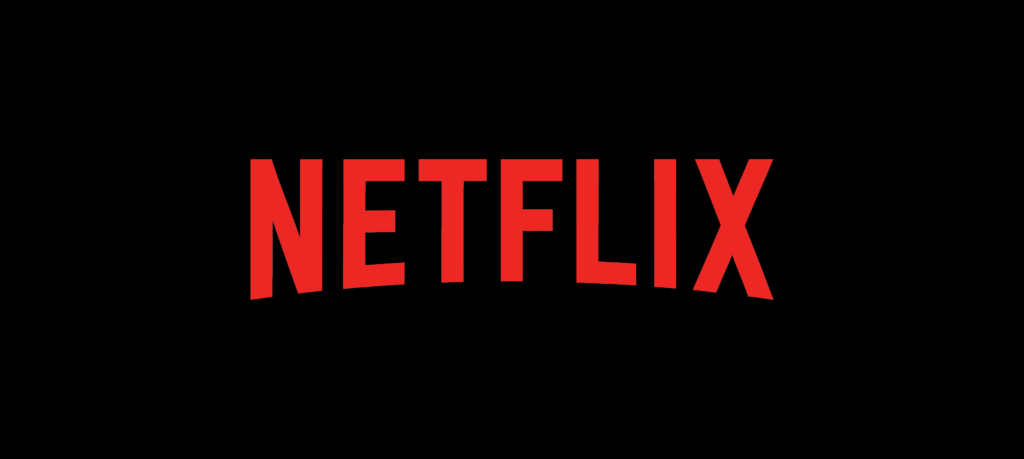
These classic series frequently move between platforms as streaming services compete for content and licensing deals expire and renew. Your best bet is always to search directly on Netflix in your region to see what’s currently available, because what’s streaming today might be gone tomorrow (and could come back next month).
The streaming wars have made our viewing habits a bit like a game of musical chairs, but hey, at least we’re not trying to coordinate our schedules around appointment television anymore, right?
These ’90s shows aren’t just nostalgic throwbacks – they’re time capsules that captured something special about growing up and finding your place in the world. They proved that television could be both entertaining and meaningful, that comedy could tackle serious issues without losing its heart, and that the relationships we form during our formative years shape who we become.
Whether you’re revisiting old favorites or discovering them for the first time, these shows offer a perfect blend of humor, heart, and that indefinable ’90s magic that modern TV is still trying to recapture. So grab some snacks, get comfortable, and prepare to either relive your childhood or understand why millennials won’t stop talking about how great the ’90s were.
Streaming availability is accurate as of June 2025 and varies by region. Content libraries change frequently, so always check your local Netflix for current availability.
This post belongs to FandomWire and first appeared on FandomWire
